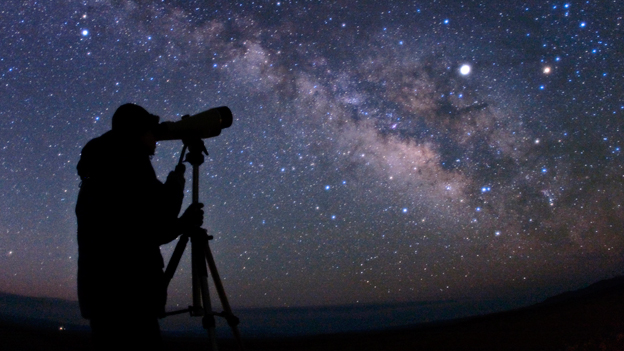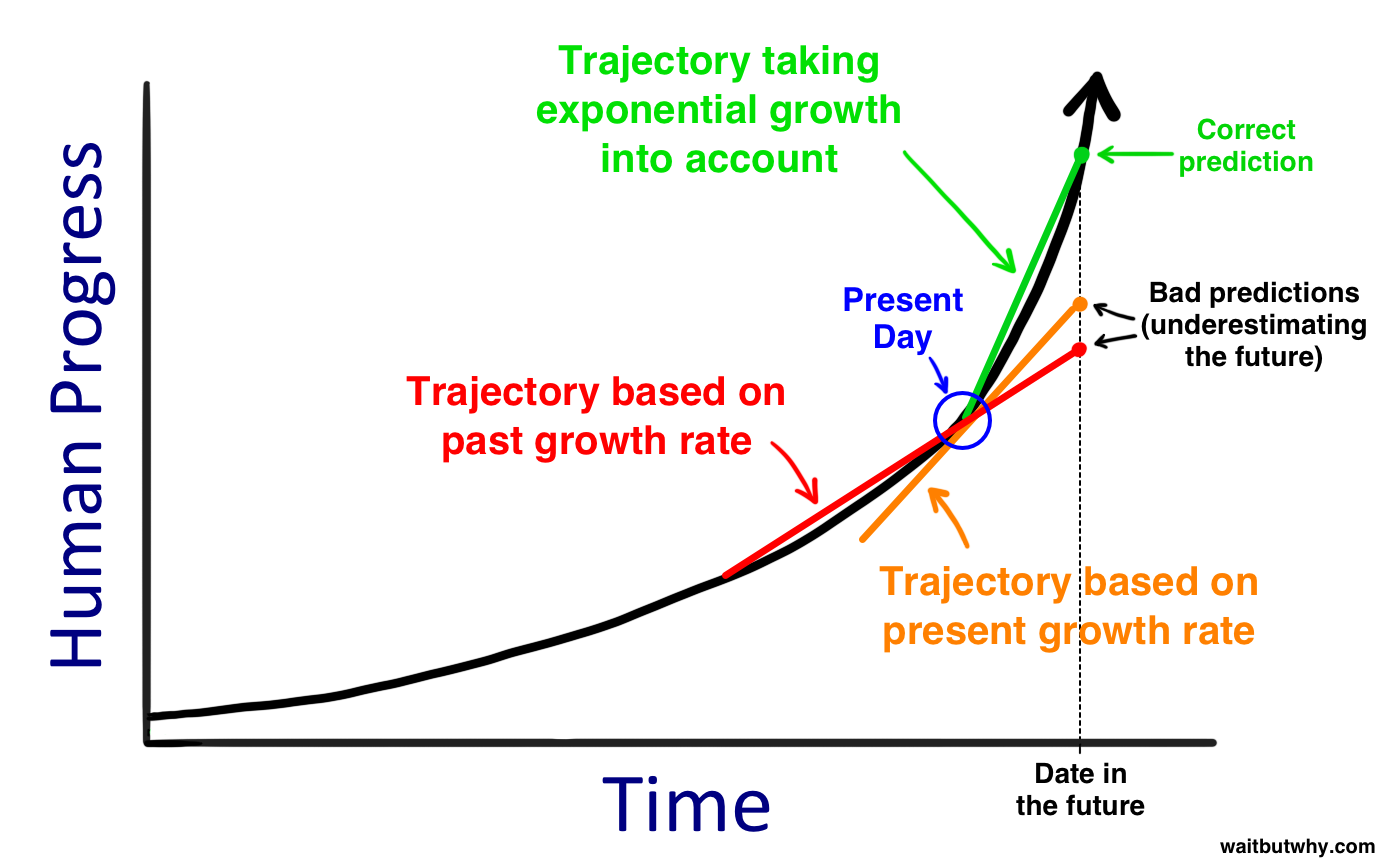
IELTS Mock Test 2022 January
- Đăng ngày: 24 Jan 2022
- Tests taken: 2,333,443
Đáp án
Part 1: Question 1 - 13
- 1 B
- 2 A
- 3 C
- 4 C
- 5 D
- 6 C
- 7 C
- 8 A
- 9 B
- 10 A
- 11 positions
- 12 of better quality
- 13 mirrors
- 1 B
- 2 A
- 3 C
- 4 C
- 5 D
- 6 C
- 7 C
- 8 A
- 9 B
- 10 A
- 11 positions
- 12 of better quality
- 13 mirrors
Part 2: Question 14 - 27
- 14 vii
- 15 ix
- 16 ii
- 17 iv
- 18 i
- 19 v
- 20 viii
- 21 D
- 22 B
- 23 C
- 24 D
- 25 27 A,B,G
- 14 vii
- 15 ix
- 16 ii
- 17 iv
- 18 i
- 19 v
- 20 viii
- 21 D
- 22 B
- 23 C
- 24 D
- 25 27 A,B,G
Part 3: Question 28 - 40
- 28 TRUE
- 29 NOT GIVEN
- 30 NOT GIVEN
- 31 TRUE
- 32 D
- 33 C
- 34 B
- 35 D
- 36 A
- 37 B
- 38 B
- 39 D
- 40 D
- 28 TRUE
- 29 NOT GIVEN
- 30 NOT GIVEN
- 31 TRUE
- 32 D
- 33 C
- 34 B
- 35 D
- 36 A
- 37 B
- 38 B
- 39 D
- 40 D
Leaderboard:
| # | Thành viên | Điểm | Thời gian | |
|---|---|---|---|---|
| Hong Pham thi thu |  | 9.0 | 15:08 | |
| Ngọc Trân Trần |  | 9.0 | 15:09 | |
| SHANMUKENDAR REDDY VENNAPUSA |  | 9.0 | 15:15 | |
| 4 | Vaishnavi Pekety |  | 9.0 | 15:16 |
| 5 | Angel Quiet |  | 9.0 | 15:23 |
| 6 | Nguyễn Nhi |  | 9.0 | 15:27 |
| 7 | pulluru dhanush kumar reddy |  | 9.0 | 15:37 |
| 8 | Thai Duc Hung |  | 9.0 | 15:46 |
| 9 | Aakriti Sijapati |  | 9.0 | 15:51 |
| 10 | parisha grover |  | 9.0 | 15:55 |
Giải thích chi tiết
Questions 1–5
Choose the correct letter, A, B, C or D.
Write the correct letter in boxes 1-5 on your answer sheet.
According to the writer, the first telescope was
- A
- B
- C
- D
Keywords in Questions | Similar words in Passage |
Q1. According to the writer, the first telescope was A . invented by children. B . made by a lens maker. C . a reflective telescope. D . quite a complex piece of equipment.
| Hans Lippershey, the Dutch lens maker who eventually applied for the first telescope patent, credits children as having been his motivation for the invention of the first telescope |
NOTE - Take a look at the final sentence in first paragraph which mentions to the keyword “first telescope”, it contains the idea of option B, the Dutch lens maker invented it. So the answer is B. Look at the other options: - Option A: The final sentence of first paragraph states children is the motivation, not inventor. So option A is incorrect. - Option C: The third sentence in second paragraph refers to first telescope as first refracting telescope. So option C is incorrect. - Option D: The first sentence of second paragraph mentions to telescope as primitive invention and see 3-times further therefore it is a simple equipment. So option D is incorrect. | |
The writer states that Galileo
- A
- B
- C
- D
Keywords in Questions | Similar words in Passage |
Q2. The writer states that Galileo A . improved on the design of the first telescope. B . created the first reflective telescope. C . took 24 hours to make a reflective telescope. D . allowed people to see 3 times further than the first telescope.
| The tools used in the manufacturing of the first refracting telescope was all Galileo needed to know and within 24 hours he had developed a better one |
NOTE - Take a look at the third sentence in second paragraph, it mentions to “Galileo" with the same content to option A “developed a better one" is similar to “improved on…”. So the answer is A. This sentence shows that Galileo took 24 hours to make a better refractive telescope. So option B and C are incorrect. - The fourth sentence in second paragraph indicates that the invention of Galileo had a magnification of around 30, it is 10 times further than the first telescope. So option D is incorrect. | |
The Galileo telescope was better than the first telescope because it
- A
- B
- C
- D
Keywords in Questions | Similar words in Passage |
Q3. The Galileo telescope was better than the first telescope because it A . used mirrors rather than glass. B . was longer than the first telescope. C . used better lens positioning and quality. D . used better quality lenses and glass.
| Galileo achieved these extraordinary results by figuring out the combination of the positions of the lenses and also by making his own lenses which were of better quality |
NOTE - Take a look at the fifth sentence in second paragraph, it has the same idea to the question “achieve these extraordinary results” is similar to “was better than the first telescope”, “by" is similar to “because”. Therefore the needed information is in this sentence. - This sentence refers to “the positions of lenses” and “better quality” which appear in option C. So the answer here is C. - We find no clue to “glass” or “longer" therefore A,B,D are incorrect. | |
The writer states that today large telescopes are
- A
- B
- C
- D
Keywords in Questions | Similar words in Passage |
Q4. The writer states that today large telescopes are A . 20 or 30 metres in size. B . as big as 100 metres. C . very costly items. D . as good as will ever be built.
| For example, the larger telescopes in the world today are around 10 metres in diameter and the mirrors placed within them are so finely polished that even at the microscopic level there are no scratches or bumps on them at all. To achieve such a flawless surface requires a very expensive process that operates with the utmost precision . |
NOTE - Take a look at the two final sentence in third paragraph, it has the keyword “today”, “large telescopes". So the needed information is in this sentence. - The sentence before last mentions to 10 metres in diameter so option B is incorrect. - The first sentence in final paragraph refers to 8 to 10 metres in size so option A is incorrect. - The final sentence of third paragraph has similar content to option C. “expensive process” is equal to “costly items”. So the answer here is C. Option D is not mentioned. | |
Large, powerful telescopes are difficult to build because
- A
- B
- C
- D
Keywords in Questions | Similar words in Passage |
Q5. Large, powerful telescopes are difficult to build because A . designs have not changed in nearly 100 years. B . it is difficult to locate the flint glass needed for them. C . the area needed to house the telescope is simply too large. D . the lenses must be extremely reflective.
| The engineering and technology required to build such a flawless reflective surface is most impressive |
NOTE - Take a look at the final paragraph, it mentions to the keywords “large telescopes” which appeared in the question. We can assume the answer will be in this paragraph. - The two final sentence mentions to the lenses, the lenses are required to be flawless reflective surface. “impressive” is similar to “extremely”. It relates to option D. So the answer here is D. - The sixth and seventh sentence of third paragraph write about “designs have not changed much in the last 100 years” which is option A, the two final sentence in fourth paragraph write about “difficulty locating disks of flint glass…” which is option B, but A and B are not relate to large, power telescopes. Option C is not mentioned. | |
Questions 6-10
Classify the following features as belonging to
| A | the Achromatic telescope |
| B | the Reflective telescope |
| C | the Refracting telescope |
Write the correct letter A, B or C, in boxes 6-10 on your answer sheet.
6 The first telescopes made.
7 Uses a series of lenses one on top of the other.
8 Highly polished lenses.
9 First use of mirrors to collect light.
10 Two pieces of glass stuck together.
- 6 Answer: C
Keywords in Questions
Similar words in Passage
Q6. The first telescopes made.
The first telescopes built in the early 1600s were very primitive inventions allowing the user to see around 3-times further than the naked eye. …The tools used in the manufacturing of the first refracting telescope was all Galileo needed to know and within 24 hours he had developed a better one
NOTE
- Take a look at the first sentence in second paragraph mentions to the keyword “first telescopes” which appeared in the question. So the needed information is in this paragraph.
- The third sentence mentions to first telescope as a first refracting telescope. So the answer here is C.
- 7 Answer: C
Keywords in Questions
Similar words in Passage
Q7. Uses a series of lenses one on top of the other.
They noticed that when they placed lenses one on top of the other , they were able to see a considerable distance.
NOTE
- Take a look at the second sentence in first paragraph, it contains the same words which appeared in the question “…lenses one on top of the other”. So the needed information is in this paragraph.
- First paragraph mentions to the first refracting telescope. So the answer here is C.
- 8 Answer: A
Keywords in Questions
Similar words in Passage
Q8. Highly polished lenses
The telescope design used two pieces of special optical glass known as crown and flint Each side of each piece was ground and polished and then the two pieces were assembled together.
NOTE
- Take a look at the fourth sentence in fourth paragraph, it refers to the keyword “polished" which appeared in the question.
- All the fourth paragraph is about achromatic telescope which is shown clearly at the first sentence. So the answer here is A.
- 9 Answer: B
Keywords in Questions
Similar words in Passage
Q9. First use of mirrors to collect light.
Newton created a Reflective Telescope, one that used a dish-shaped or parabolic mirror to collect light and concentrate the image before it was visible in the eyepiece.
NOTE
- The keyword concerned in this question are “mirror", “collect light".
- Take a look at the third sentence in third paragraph, it contains the keywords.
- This sentence mentions to “reflective telescope”. So the answer here is B.
- 10 Answer: A
Keywords in Questions
Similar words in Passage
Q10. Two pieces of glass stuck together.
The telescope design used two pieces of special optical glass known as crown and flint Each side of each piece was ground and polished and then the two pieces were assembled together.
NOTE
- The keyword concerned in this question are “two pieces", “glass".
- Take a look at the fourth sentence in fourth paragraph, it contains the keywords and “assembled" is equal to “stuck".
- According to Q8, the fourth paragraph mentions about the achromatic telescope. So the answer here is A.
Questions 11 -13
Complete the summary below using words from the passage.
Choose NO MORE THAN THREE WORDS from the passage for each answer.
Write your answers in boxes 11-13 on your answer sheet
There have been a number of changes in telescopes since they were first invented. For example, Galileo’s telescope increased magnification of the previously made telescope by a factor of 30. He did this by altering the lenses 11 and also constructing lenses 12 . Other improvements followed but the most significant step forward, and still a major factor today in telescope design, has been the inclusion of 13 . |
- 11 Answer: positions
Keywords in Questions
Similar words in Passage
Q11. For example, Galileo’s telescope increased magnification of the previously made telescope by a factor of 30. He did this by altering the lenses 11.
Whereas the original version had a magnification of 3, the new telescope had a magnification of around 30. Galileo achieved these extraordinary results by figuring out the combination of the positions of the lenses and also by making his own lenses which were of better quality
NOTE
- Q11 & Q12 are about Galileo's telescope. We find the needed information in second paragraph. The words to fill in both blank should be nouns.
- Take a look at the fifth and sixth sentence, they contain the keywords “magnification”, “30", “lenses" which are appeared in the question.
- “altering" is equal to “figuring out” , “constructing" is equal to “making".
- According to the sixth sentence, Galileo did increased magnification by altering the lenses “positions" and constructing lenses “of better quality”. The answer for Q11 is “positions”
- 12 Answer: of better quality
Keywords in Questions
Similar words in Passage
Q12. For example, Galileo’s telescope increased magnification of the previously made telescope by a factor of 30. He did this by altering the constructing lenses 12 .
Whereas the original version had a magnification of 3, the new telescope had a magnification of around 30. Galileo achieved these extraordinary results by figuring out the combination of the positions of the lenses and also by making his own lenses which were of better quality
NOTE
- Q11 & Q12 are about Galileo's telescope. We find the needed information in second paragraph. The words to fill in both blank should be nouns.
- Take a look at the fifth and sixth sentence, they contain the keywords “magnification”, “30", “lenses" which are appeared in the question.
- “altering" is equal to “figuring out” , “constructing" is equal to “making".
- According to the sixth sentence, Galileo did increased magnification by altering the lenses “positions" and constructing lenses “of better quality”. The answer for Q12 is “of better quality”.
- 13 Answer: mirrors
Keywords in Questions
Similar words in Passage
Q13. Other improvements followed but the most significant step forward, and still a major factor today in telescope design, has been the inclusion of 13 .
Thus, lenses used for magnification in telescopes were replaced by mirrors. Mirrors have since been the standard for telescopes.
NOTE
- Q13 is about the other lenses improvements followed Galileo's invention. We can find the needed information in the third paragraph.
- The word to fill in the blank should be noun.
- Take a look at the fourth and fifth sentence, it mentions to the most significant improvements is “mirrors". “standard" is equal to “major factor". So the answer here is “mirrors”.
READING PASSAGE 1
You should spend about 20 minutes on Questions 1-13 which are based on Reading Passage 1.

LOOKING IN THE TELESCOPE
A story is told that around 400 years ago some children were fooling around in an eye glass shop. They noticed that when they placed lenses one on top of the other, they were able to see a considerable distance. They played around with the concept for a while, experimenting with what happened when they varied the distance between the lenses. Hans Lippershey, the Dutch lens maker who eventually applied for the first telescope patent, credits children as having been his motivation for the invention of the first telescope.
The first telescopes built in the early 1600s were very primitive inventions allowing the user to see around 3-times further than the naked eye. It was not too long however, until Italian astronomer Galileo heard about the invention ‘that through use of correctly-positioned lenses, allowed people to see things a long way away’. The tools used in the manufacturing of the first refracting telescope was all Galileo needed to know and within 24 hours he had developed a better one. In fact, the process of improvements Galileo made on Lippershey’s telescope were quite dramatic. Whereas the original version had a magnification of 3, the new telescope had a magnification of around 30. Galileo achieved these extraordinary results by figuring out the combination of the positions of the lenses and also by making his own lenses which were of better quality. Although he originally thought they were stars, the better quality lenses – and some scientific analysis – enabled him to eventually use his telescopes to see the moons of Jupiter. Galileo’s refracting telescopes – so-called due to the way they handled the light that passed through them – were the standard at that time.
Some 70 years later, British scientist Isaac Newton, explored the way a prism refracts 1 white light into an array of colors. He recognised that a lens was a circular prism and that the separation of colors limited the effectiveness of the telescopes in use at the time. Newton created a Reflective Telescope, one that used a dish-shaped or parabolic mirror to collect light and concentrate the image before it was visible in the eyepiece. Thus, lenses used for magnification in telescopes were replaced by mirrors. Mirrors have since been the standard for telescopes. In fact, according to telescope researcher Dr. Carl Addams, the basic designs of telescopes have not changed much in the last 100 years. What has changed however, is the way technology has been used to improve them. For example, the larger telescopes in the world today are around 10 metres in diameter and the mirrors placed within them are so finely polished that even at the microscopic level there are no scratches or bumps on them at all. To achieve such a flawless surface requires a very expensive process that operates with the utmost precision.
1: The separation or change of direction of a ray of light when passed through a glass of water.
The mid 1700s, saw the discovery and production of the Achromatic telescope. This type of telescope differed from previous ones in the way it handled the different wavelengths of light. The first person who succeeded in making achromatic refracting telescopes seems to have been the Englishman, Chester Moore Hall. The telescope design used two pieces of special optical glass known as crown and flint Each side of each piece was ground and polished and then the two pieces were assembled together. Achromatic lenses bring two wavelengths – typically red and blue – into focus in the same plane. Makers of achromatic telescopes had difficulty locating disks of flint glass of suitable purity needed to construct them. In the late 1700s, prizes were offered by the French Academy of Sciences for any chemist or glass-manufacturer that could create perfect discs of optical flint glass however, no one was able to provide a large disk of suitable purity and clarity.
Currently the largest telescopes are around eight to ten metres in size. These extremely expensive and sophisticated pieces of equipment are located primarily throughout Europe and America. Dr Addams believes that the telescopes of the future will be a gigantic improvement in what is currently considered state-of-the-art. Telescopes that are 20 or 30 metres in diameter are currently being planned, and there has been a suggestion put forward by a European firm that they would like to build a 100-metre telescope. Says Addams, ‘The quality of the glass needed to build a 100 meter telescope is like building a lens the size of a football field and having the largest bump in that football field being a ten-thousandth of a human hair’. The engineering and technology required to build such a flawless reflective surface is most impressive.
--------------------
Great thanks to volunteer Trương Nhật Minh who has contributed these explanations and markings.
If you want to make a better world like this, please contact us.






